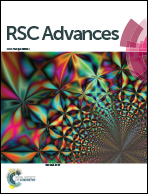Thermochemical processing of fuels involving the use of molecular oxygen
Abstract
In a high-temperature (e.g., 1000 °C) atmosphere containing combustibles, it is naturally thought that air/O2 should be kept away for fear of combustion and explosion. However, during thermochemical processing (TCP) of carbonaceous fuels (CFs) it's actually not that simple. TCP, the process for recovering CFs or converting problematic CFs into preferred ones, is a key technology for efficiently and relatively cleanly utilizing various CFs that supply the majority of the worldwide energy demand. However, TCP is often subject to some obstacles (e.g., high energy input and thermodynamic constraint). This review on extensive literature demonstrates that not only does introducing a controlled amount of O2 (i.e., molecular oxygen) into TCP overcome its many obstacles, but also this O2-assisted strategy is applicable to all of the main CFs currently known. Despite such a wide applicability to CFs, there lacks a comprehensive consideration of various aerobic TCP processes for understanding the O2-assisted strategy as a kind of universal TCP technology for CFs. In this review, we for the first time summarize and discuss the use of O2 in various TCP processes for all of the main CFs. We hope that this review can inspire more consideration of the various aerobic TCP processes so that these extremely complex processes can be communicated or consulted from each other's experience/research findings in order to enlighten, guide or promote their respective development.


 Please wait while we load your content...
Please wait while we load your content...